Return to Stafford Air & Space Museum
ASTP Docking Module Mockup
In addition to a low-fidelity docking module display, Stafford also exhibits a higher-fidelity mockup of the Soyuz side of the Apollo-Soyuz Test Project docking module.
The docking module served several functions.
- The Apollo spacecraft used a probe and drogue docking mechanism that differed substantially from that of the Soyuz; the DM had an Apollo-type docking mechanism on one end and an "international" docking mechanism, used by the Soyuz especially for ASTP, on the other. Thus, the DM physically enabled the two spacecraft to dock.
- The Apollo spacecraft used a 100% pure oxygen atmosphere at a pressure of about 5 psi. The Soyuz used a mixed nitrogen-oxygen atmosphere (80-20) at about 14.7 psi. Thus, an airlock/decompression chamber was required for crew transfer.
- The DM housed communication gear which allowed the Apollo spacecraft to communicate on Soyuz frequencies.
- Finally, the docking module provided additional space: The Apollo spacecraft was designed to house 3 astronauts and the Soyuz typically accommodated 2 or 3 cosmonauts. The DM provided additional volume.
It was in the docking module that the famous handshake in space took place.
The NTRS has operations handbooks for docking module DM 1 and docking module DM 2. DM 2 was the docking module which flew on the mission; since the National Air & Space Museum exhibits the backup docking module in their ASTP display, I assume that it is DM 1.
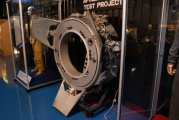 dsc46493.jpg |
 dsc46495.jpg |
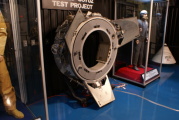 dsc46500.jpg |
 dsc46501.jpg |
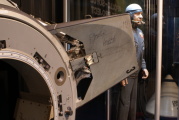 dsc46504.jpg |
 dsc46509.jpg |
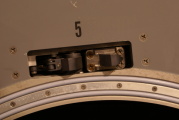 dsc46508.jpg |
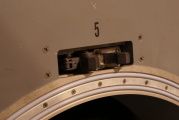 dsc46507.jpg |
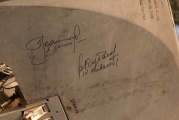 dsc46505.jpg |
 dsc46506.jpg |
Return to Stafford Air & Space Museum